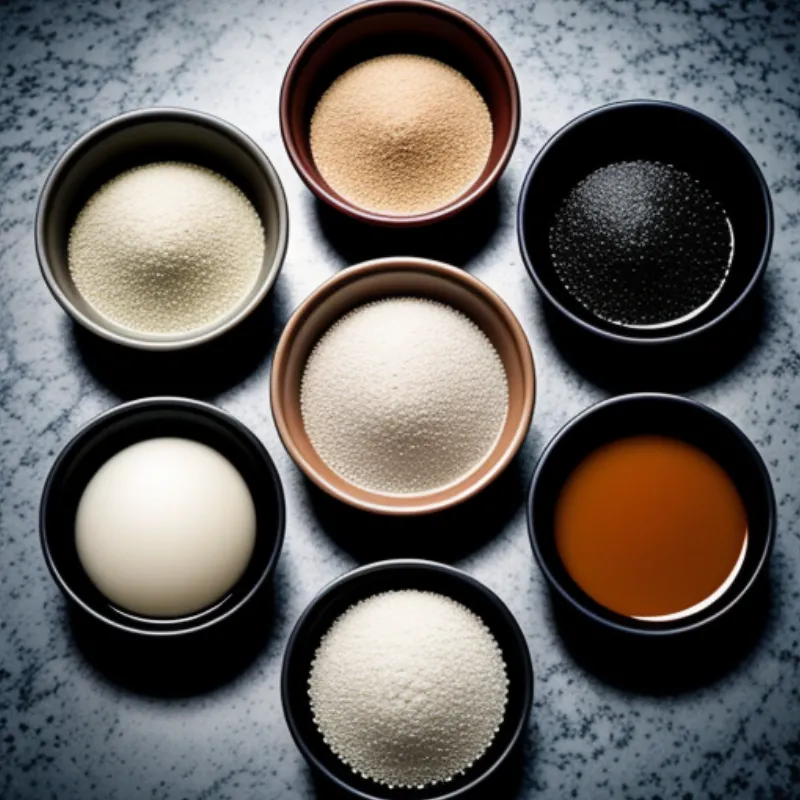Ankake sauce, a cornerstone of Japanese cuisine, is a savory and versatile sauce that can elevate any dish with its glossy sheen and umami-rich flavor. “Ankake” itself means “thickened sauce” or “sauce poured over,” perfectly describing its texture and application. Often served over rice, noodles, or vegetables, Ankake sauce boasts a delightful balance of savory, sweet, and salty notes that will tantalize your taste buds. In this article, we’ll unlock the secrets to making authentic Ankake sauce right in your own kitchen!
Mastering the Art of Ankake Sauce: A Step-by-Step Guide
Making Ankake sauce is easier than you think! Here’s a simple guide to crafting this delicious sauce, along with helpful tips and variations.
Ingredients: A Symphony of Flavors
For the base:
- 400ml Dashi stock (or chicken/vegetable broth)
- 2 tablespoons soy sauce
- 1 tablespoon Mirin (sweet rice wine)
- 1 tablespoon sake (Japanese rice wine)
For the thickening:
- 1 tablespoon potato starch or cornstarch
- 2 tablespoons cold water
Common additions:
- 1/2 cup thinly sliced vegetables (carrots, mushrooms, bamboo shoots, snap peas)
- 100g cooked protein (chicken, pork, shrimp, tofu – sliced or diced)
“A good Ankake sauce always starts with quality ingredients,” shares Chef Kenji Tanaka, renowned for his expertise in Japanese cuisine. “Using authentic Dashi stock and Mirin is key to achieving a truly authentic flavor.”
Essential Tools
- Small saucepan
- Whisk
- Cutting board
- Knife
Crafting Your Ankake Masterpiece: A Step-by-Step Guide
- Prepare your thickening agent: In a small bowl, whisk together the potato starch (or cornstarch) and cold water until smooth. This is your “slurry,” which will thicken the sauce.
- Heat the broth: Pour the Dashi stock (or broth) into a saucepan and bring to a simmer over medium heat.
- Season and Simmer: Add the soy sauce, Mirin, and sake to the simmering broth. Stir well to combine.
- Add your chosen additions: This is where you can get creative! Add any vegetables and protein you like. Allow them to cook through in the simmering sauce for a few minutes.
- Thicken the sauce: Give the slurry a quick whisk to ensure it’s still combined, then slowly drizzle it into the simmering sauce while continuously whisking. The sauce will begin to thicken almost immediately.
- Adjust the consistency: Continue adding the slurry gradually until your desired consistency is reached. Remember, the sauce will thicken slightly more as it cools.
Tips & Tricks for Ankake Perfection:
- Want a thicker sauce? Simply add a bit more slurry, 1 teaspoon at a time, until you reach your preferred thickness.
- Lumpy sauce? Don’t worry! Pass the sauce through a fine-mesh sieve for a smooth, lump-free finish.
- Freshly grated ginger or a pinch of white pepper can add an extra layer of flavor.
- Vegetarian? Use vegetable broth and substitute the protein with firm tofu or mushrooms for a delicious and hearty meal.
 Ankake Sauce Ingredients
Ankake Sauce Ingredients
Presentation and Serving Suggestions:
Ankake sauce elevates simple dishes to restaurant-quality meals.
- Classic comfort: Pour it generously over steamed rice topped with your favorite protein and vegetables.
- Noodle nirvana: Toss it with stir-fried noodles, like yakisoba or udon, for a satisfying and flavorful meal.
- Vegetable delight: Drizzle it over steamed or stir-fried vegetables to enhance their natural flavors.
 Ankake Sauce over Rice
Ankake Sauce over Rice
Storing Leftovers:
Store any leftover Ankake sauce in an airtight container in the refrigerator for up to 3 days. Gently reheat it on the stovetop, adding a splash of water or broth if needed to loosen the consistency.
FAQs: Addressing Your Ankake Queries:
Q: Can I make Ankake sauce ahead of time?
A: Absolutely! Prepare the sauce up to 24 hours in advance and store it in the refrigerator. Reheat it gently on the stovetop before serving.
Q: Can I freeze Ankake sauce?
A: While it’s possible, freezing can sometimes alter the texture of the sauce. It’s best enjoyed fresh for optimal flavor and texture.
Q: Is Ankake sauce gluten-free?
A: To make the sauce gluten-free, ensure you use gluten-free soy sauce and substitute the cornstarch with potato starch or arrowroot powder.
Unleash Your Inner Chef:
Ankake sauce is a testament to the simplicity and elegance of Japanese cuisine. With its savory depth and versatility, this sauce can transform your everyday meals into culinary adventures. So, why not try your hand at making this delicious sauce at home? Share your Ankake creations and let us know your favorite ways to enjoy it!
